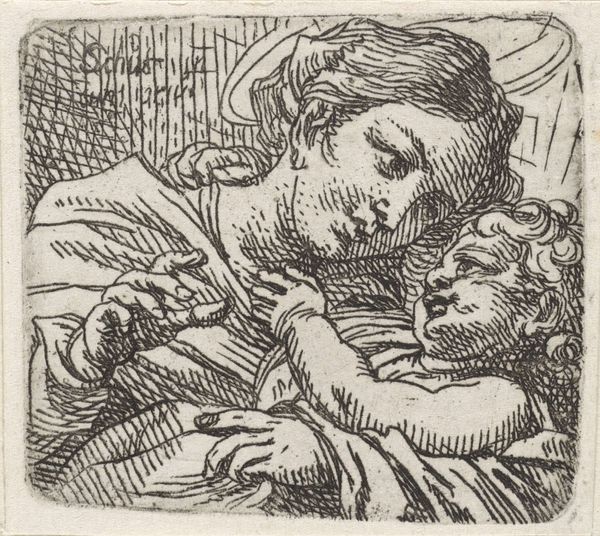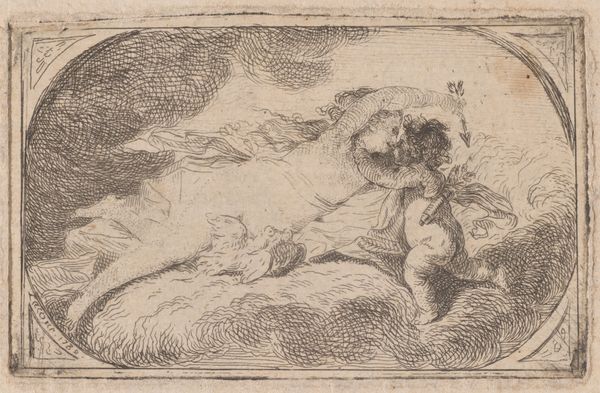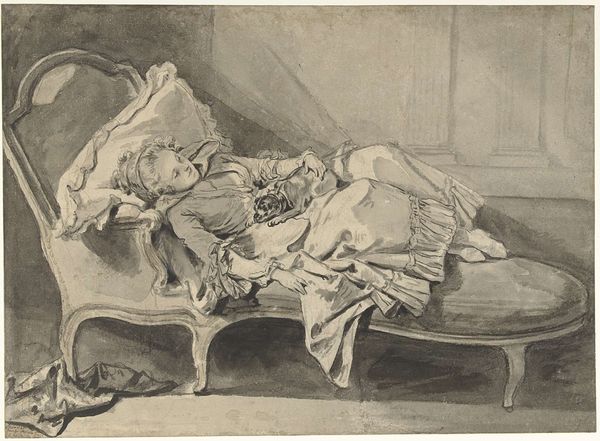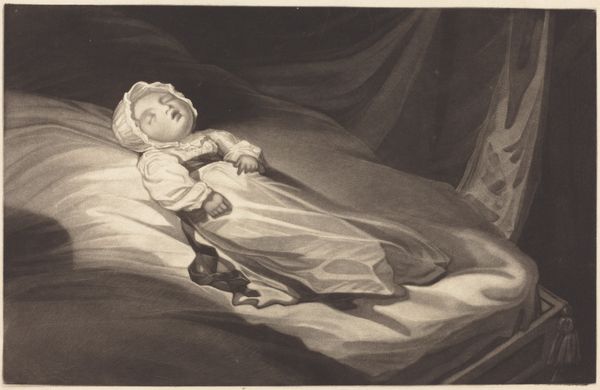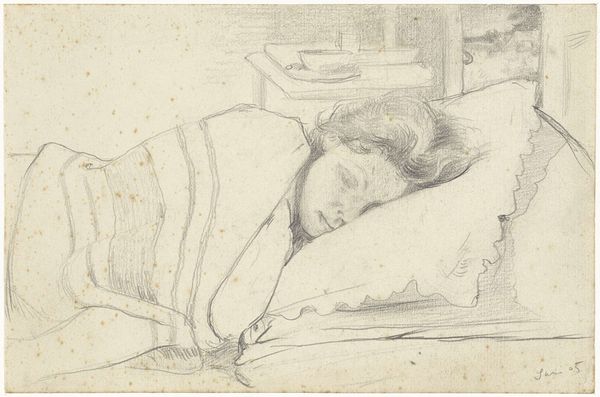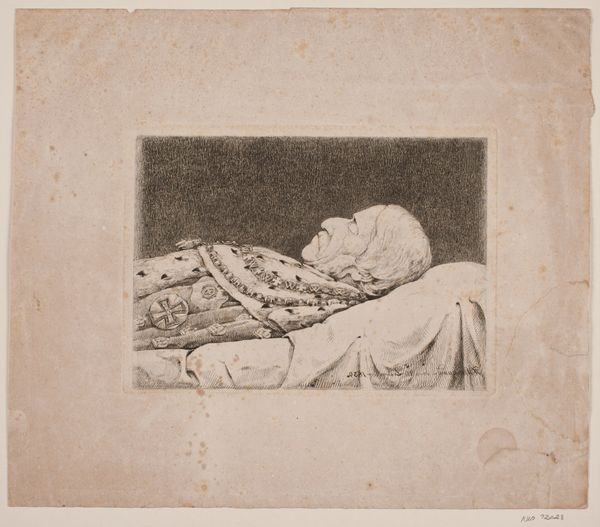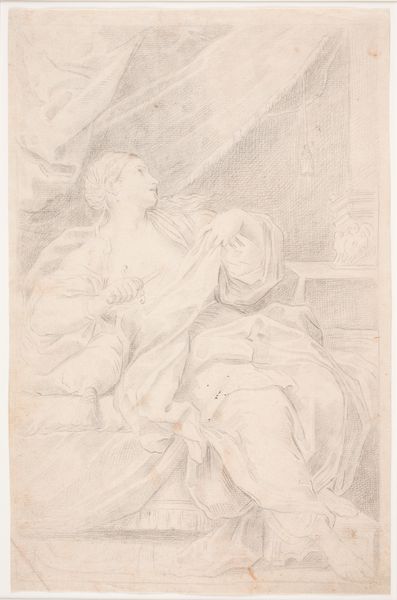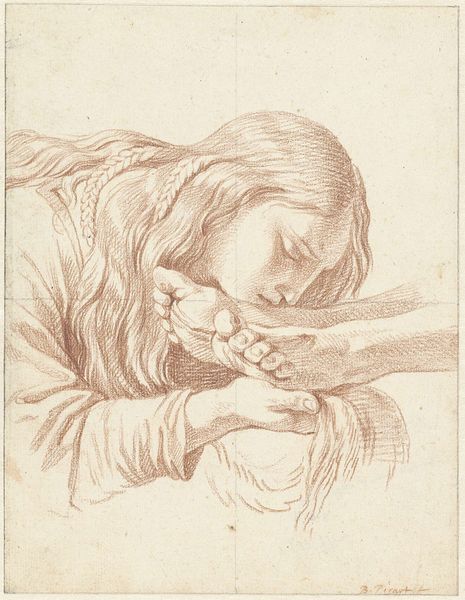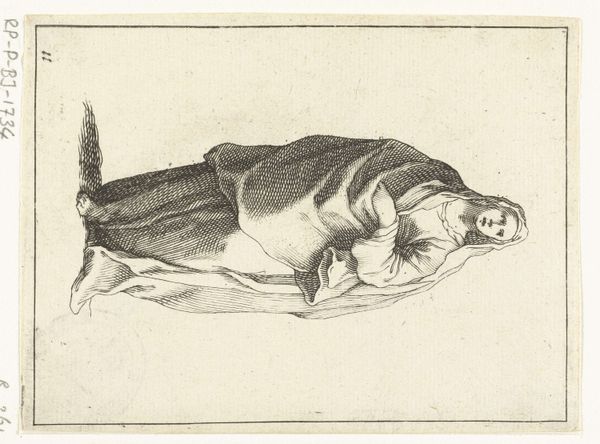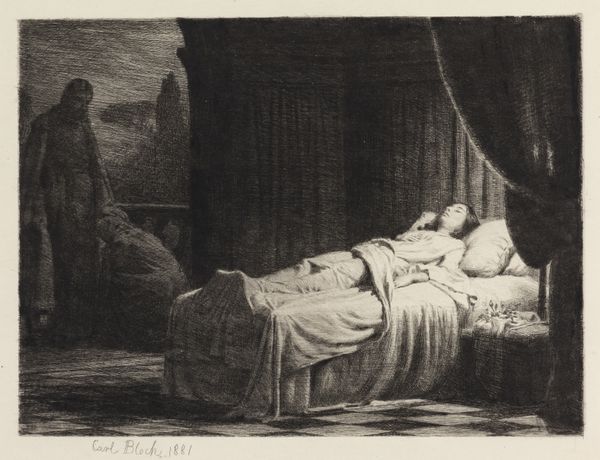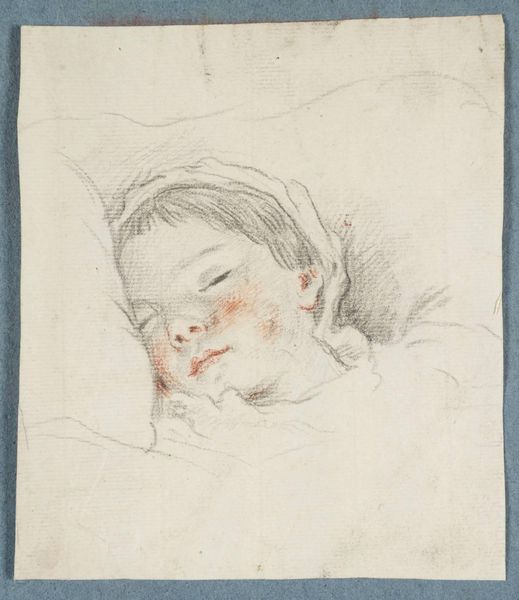
drawing, print, engraving
#
portrait
#
drawing
# print
#
romanticism
#
portrait drawing
#
genre-painting
#
engraving
Dimensions: sheet: 12.8 × 16.8 cm (5 1/16 × 6 5/8 in.) plate: 4.8 × 5.9 cm (1 7/8 × 2 5/16 in.)
Copyright: National Gallery of Art: CC0 1.0
Editor: Here we have "Dreaming on Roses," a print from 1790 by Daniel Nikolaus Chodowiecki. It gives off a serene vibe. I'm curious about your interpretation of the crosshatching technique used to build form here. What compositional elements stand out to you? Curator: The linear quality dominates, wouldn’t you agree? Note how the parallel hatching creates tonal variation, building the soft volumes of the figure and bedding. Consider the relationship between the figure and ground. How does the artist create depth or flatness, and what impact does this have on the overall composition? Editor: The figure definitely emerges due to the sharper contrast, almost appearing as though a dream is layered over a textured plane. But there's so little mid-tone, it almost creates a flattened picture plane. Can we read the symbolic arrangement of roses within the broader structure? Curator: The strategic placement of the roses is crucial to our interpretation. Observe the symmetrical arrangement framing the sleeping figure. These forms establish rhythm. What message do you think that this regular placement and subtle asymmetry are trying to convey within the visual grammar of the engraving? Editor: I didn't think about symmetry at first glance! I suppose, because of the subject of sleep, my brain jumped to interpreting the roses more for their association with romance and beauty, but I appreciate your view regarding the arrangement and the formal relations achieved within this composition. Curator: The engraving’s restricted palette—achieved by Chodowiecki’s expert manipulation of line—is also of considerable significance. How does this limit, yet also enhance, the reading of texture and form? Considering only what you see and discounting contextual details. Editor: I see now that even without bold contrasts or tonal variation, the crosshatching carries much of the expressive weight. Curator: Exactly! It reveals how the artwork generates meanings.
Comments
No comments
Be the first to comment and join the conversation on the ultimate creative platform.

